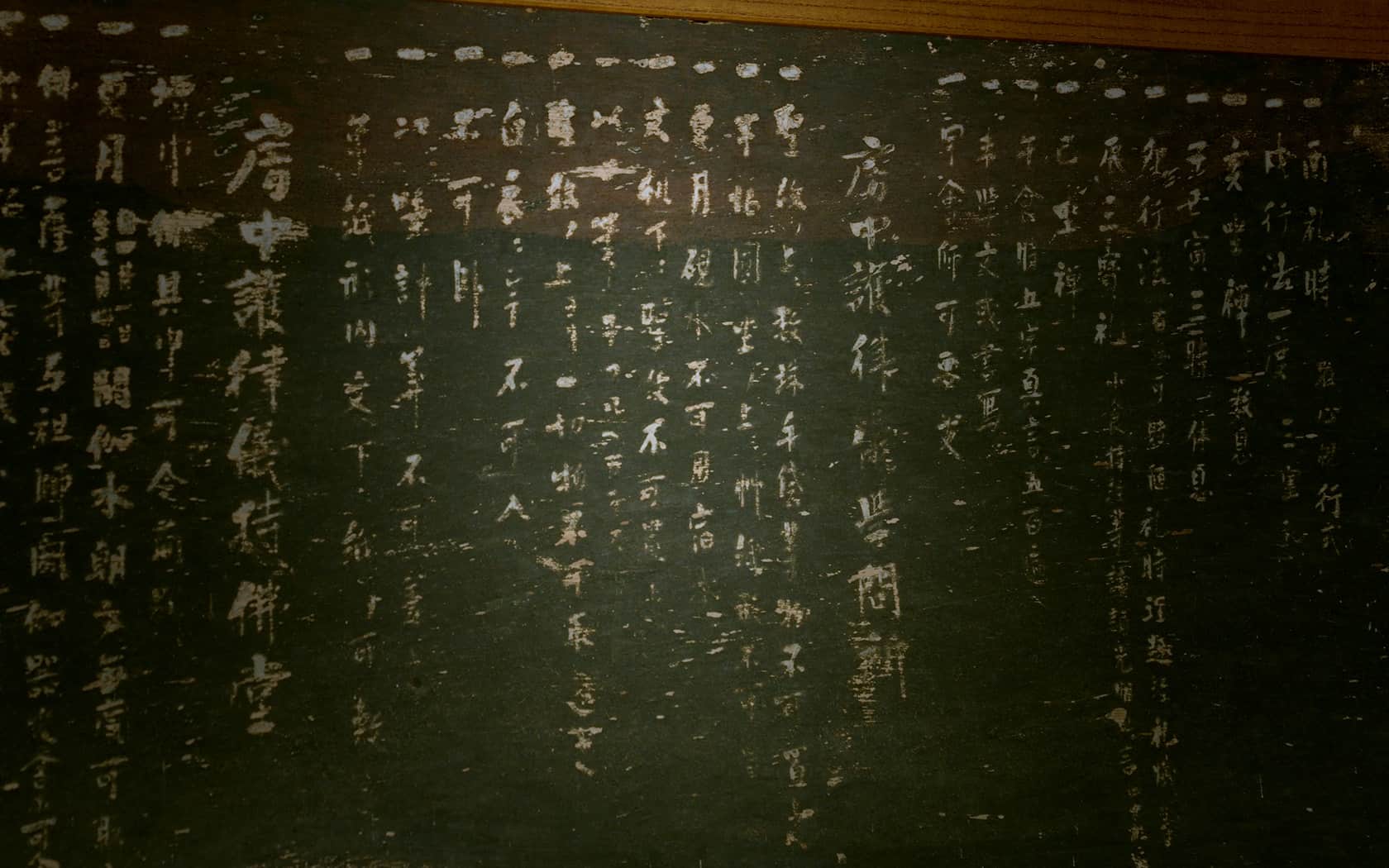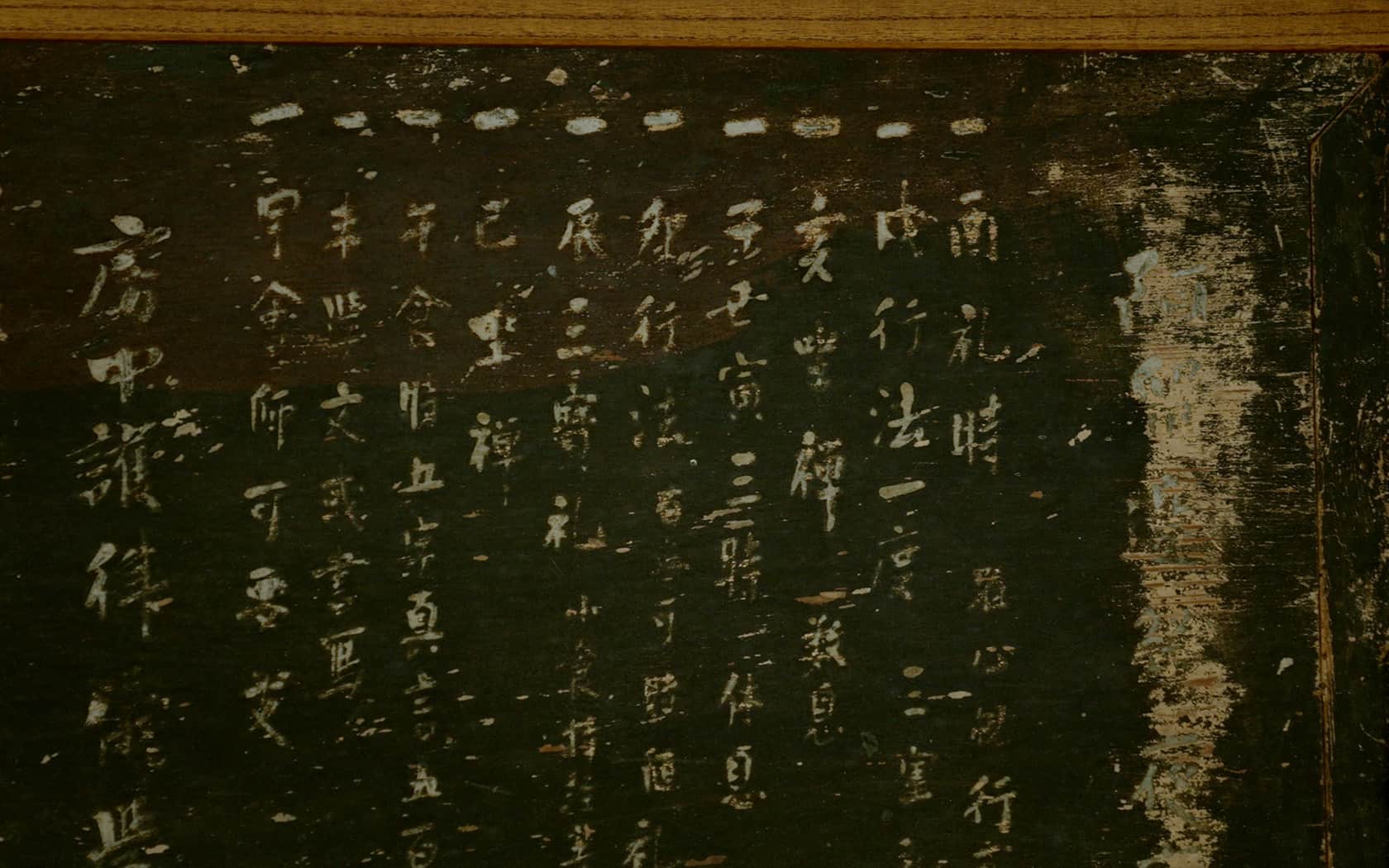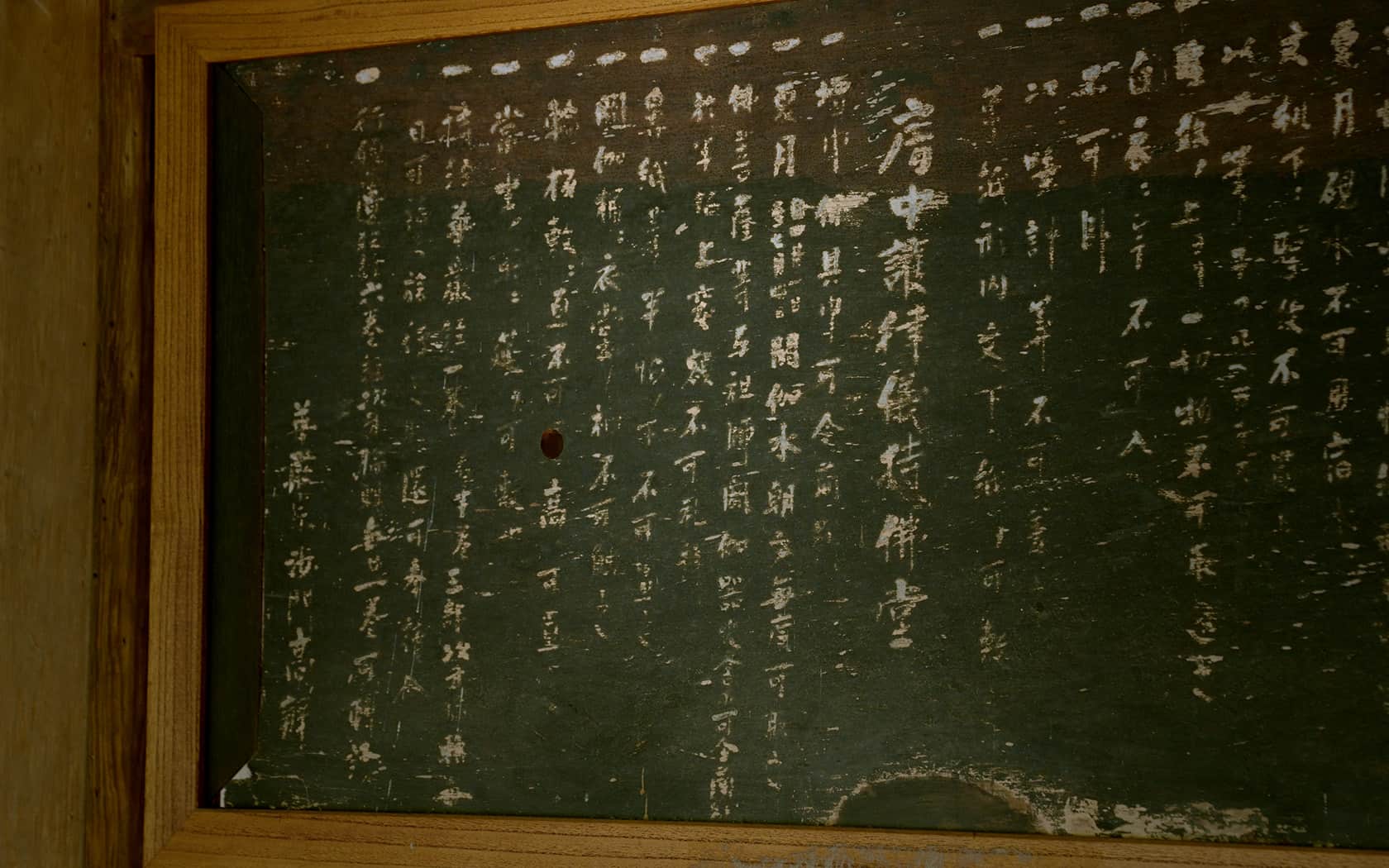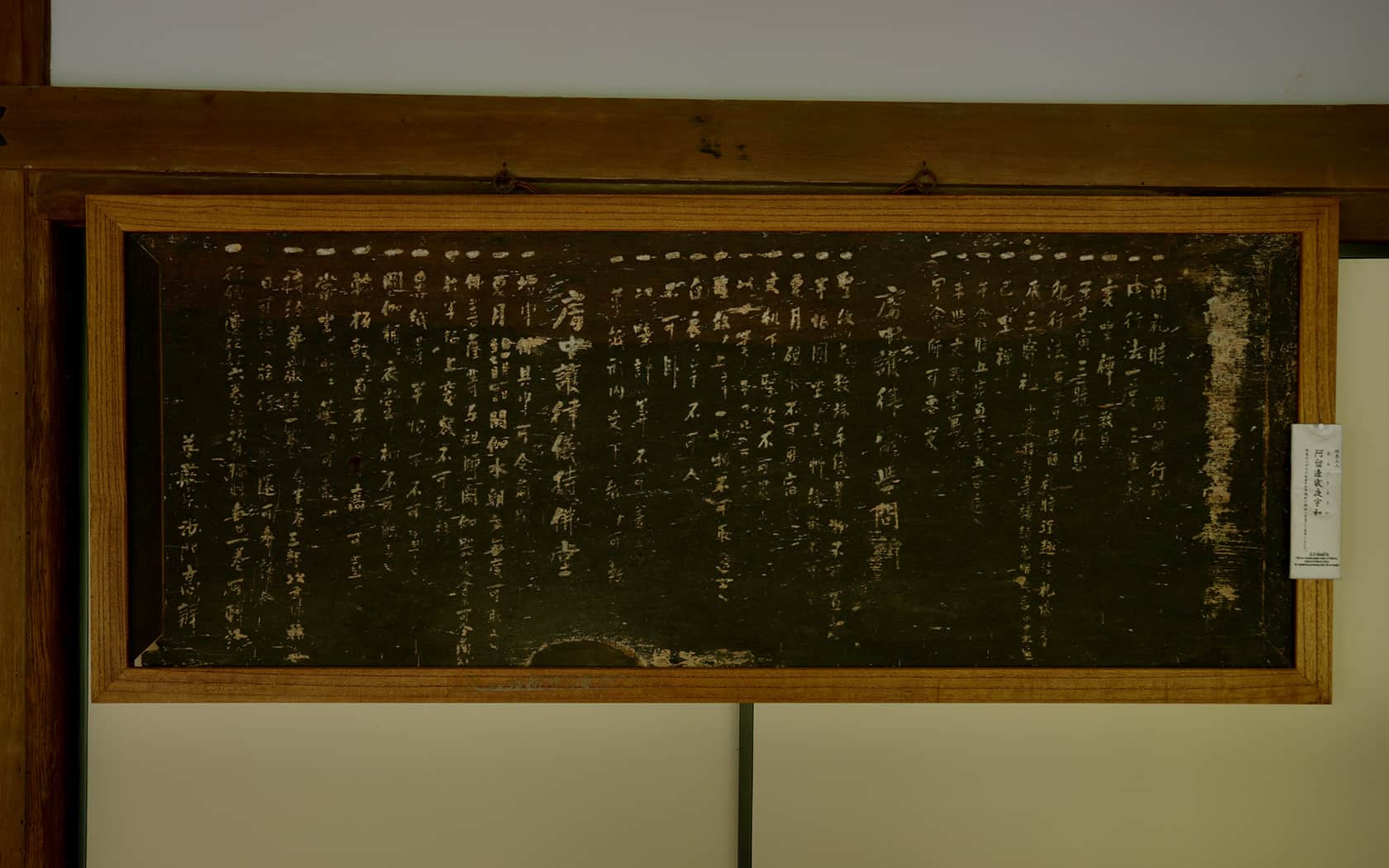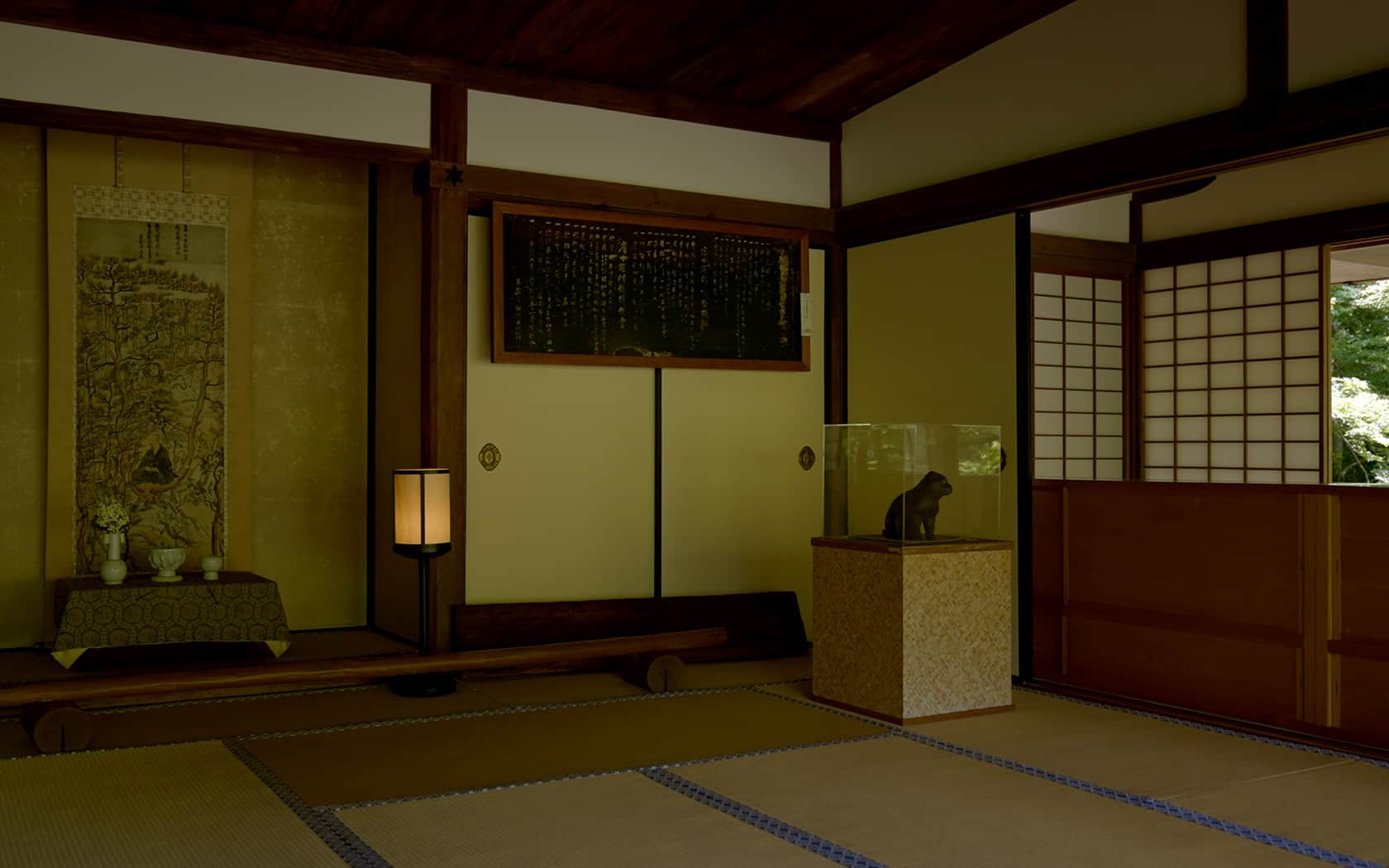This wooden tablet written by Myoe (1173–1232) lists the various routines and regulations of monastic life. The tablet goes into meticulous detail, reflecting Myoe’s strict adherence to etiquette and ritual. The title, Arubekiyowa, means “Do what should be done.”
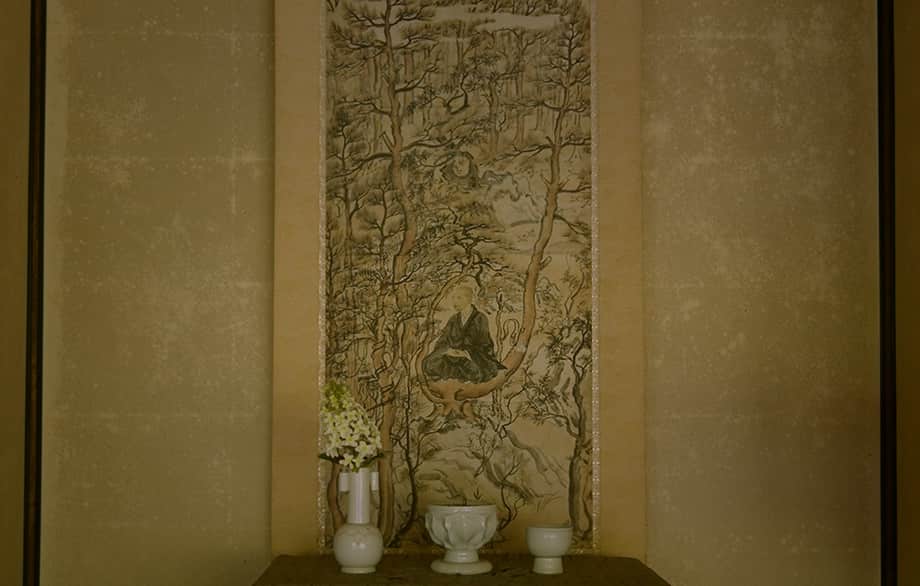
Myoe
Born in 1173 in present-day Yuasa, Aridagawa Town, Wakayama Prefecture, Myoe was a Buddhist monk known for rejuvenating the Huayan sect of Buddhism. After becoming a priest under Mongaku at Jingoji Temple, he studied Kegon Buddhism at Todaiji Temple and received the secret teachings from Konen at Kajuji Temple. He was awarded the land of Togano by Retired Emperor Gotoba in 1206 and built Kosanji Temple as the center of the Huayan sect. He died in 1232.
The first of the three sections stipulates when a priest should do certain things each day, such as meditating, reciting sutras, and studying scriptures. The second section covers etiquette in the temple study hall, and the final section describes what to do in the Buddha altar hall.


